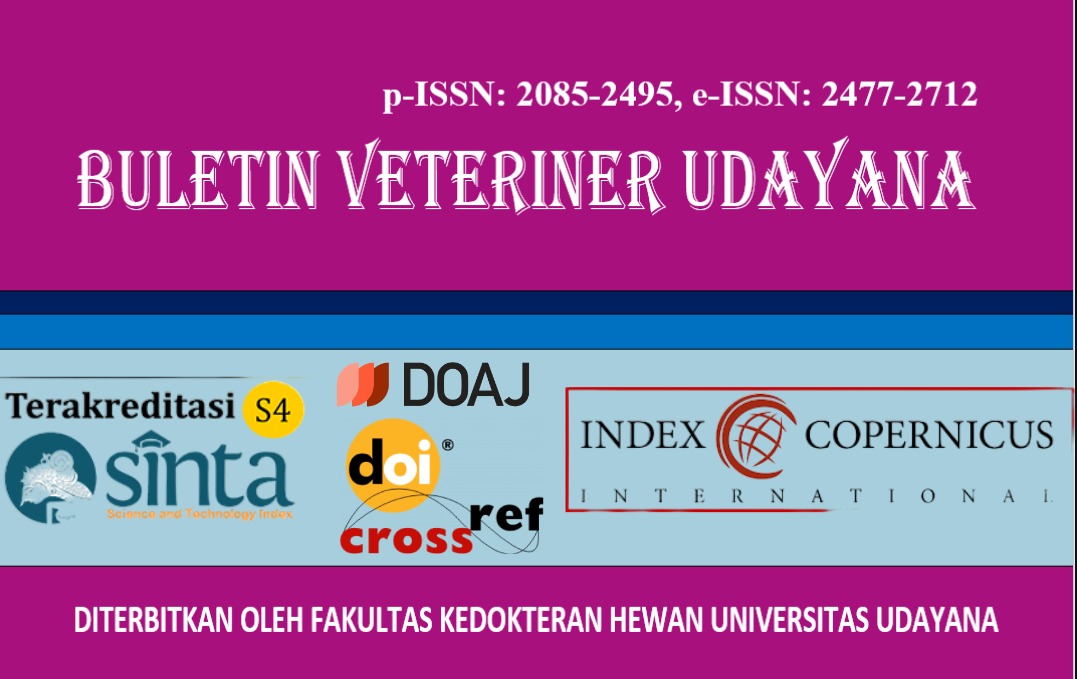MICROBIAL CONTAMINATION TEST NUMBER OF YEAST MOLD SIMPLICIA MARIGOLD FLOWERS AS STANDARD RAW MATERIAL FOR HERBAL MEDICINE
DOI:
https://doi.org/10.24843/bulvet.2025.v17.i03.p15Keywords:
microbial contamination, marigold flowers, simplicia, TYMCAbstract
The marigold plant is widely cultivated for medicinal purposes, as an ornamental plant and natural food colouring. Marigold flowers (Tagetes erecta L.) contain secondary metabolites in the form of terpenoids, essential oils, phenols, flavonoids, carotenoids, and so on. Looking at its contents and pharmacological benefits, marigold flowers have the potential to be used as simplicia as a raw material for herbal medicine. This research aims to determine the value of Total Yeast and Mold Count (TYMC) test simplicia marigold flower (Tagetes erecta L.) as a raw material for medicinal preparations based on microbial contamination standards according to the General Standard Parameters of BPOM RI Regulation Number 32 of 2019 concerning Quality Requirements for Traditional Medicines. This research is a type of non-experimental observational research because there is no treatment of the research object with a research design in the form of descriptive-quantitative analysis. The level of microbial contamination is reviewed through the Yeast and Mold Count (TYMC) test. The research data obtained was quantitative data which was analyzed by counting the number of microbes that grew on Potato Dextrose Agar (PDA) media after incubation at the appropriate growth temperature. The Total Yeast and Mold Count is 1,4 x 102 CFU/gram. The research results showed that marigold flower simplicia met the microbial contamination requirements for yeast and Mold Count numbers (≤5x105). It can be concluded that the mimosa leaves simplicia sample can be processed into drug preparations. Further research is needed on pathogenic microbial contamination, as well as additional quality standardization tests on marigold (Tagetes erecta L.) simplicia.




